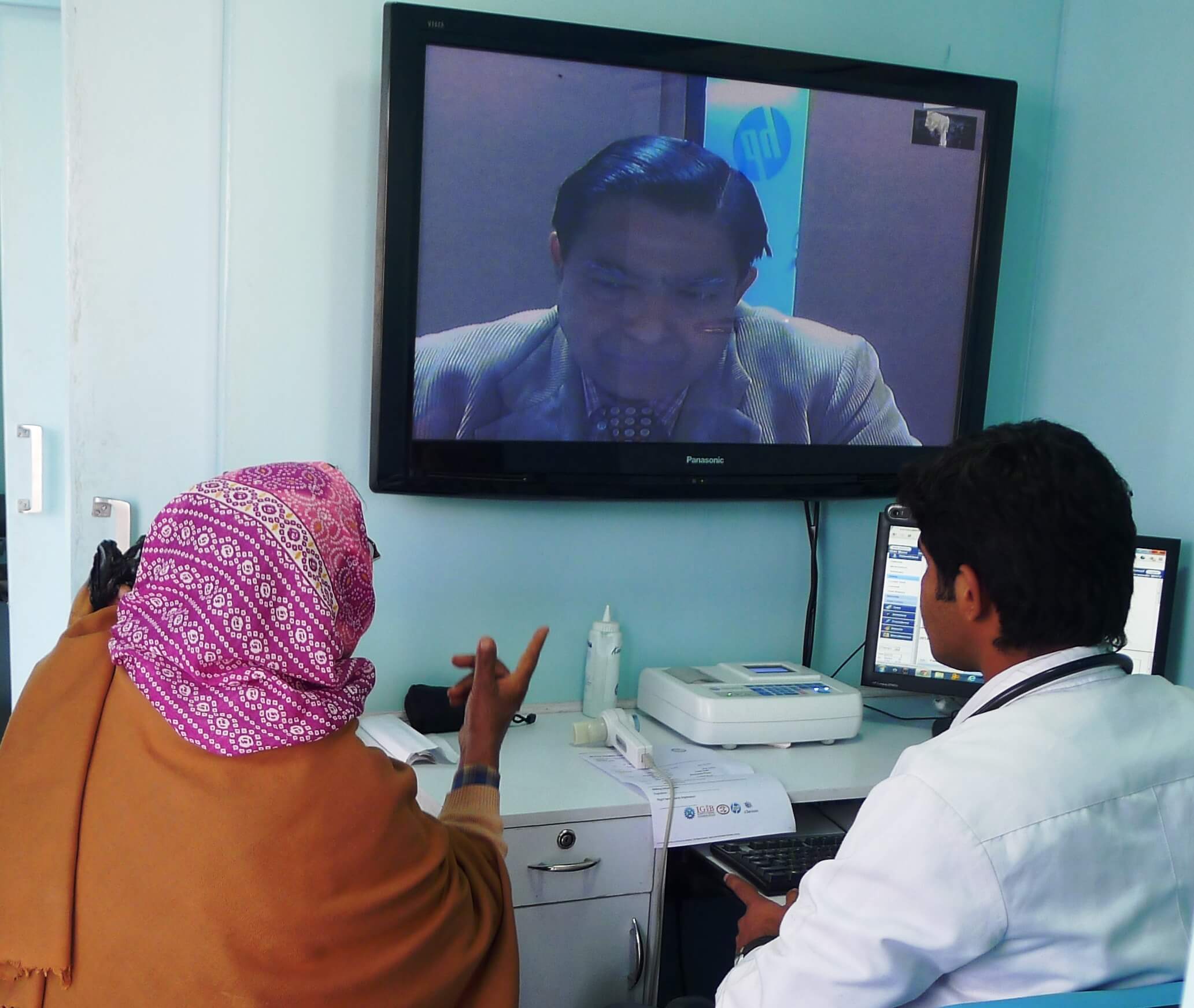A telemedicine project by the State Department, IBM, and other public and private organizations has enabled medical specialists to treat patients in remote, medically underserved areas of northern Pakistan, some of whom have suffered for years from easily treatable diseases. Using wireless broadband technology, videoconferencing and the Internet, the Pakistan Telemedicine Project has connected a central coordinating facility at the Holy Family Hospital in Rawalpindi with a hospital in Attock District, a rural area with few doctors and limited medical resources. Since late August, the program has been running virtual clinics in dermatology and ear, nose and throat specialties, performing radiology, and providing virtual grand rounds to educate local health care providers. “We’ve had patients show up who haven’t been seen by a physician in 10, 20, even 30 years,” said Dr. Richard Bakalar, chief medical officer at IBM. “Now these patients are hearing about this and coming from all over to register for these clinics,” he said. “And the doctors and health care personnel are very excited that they’re going to be able to treat patients they previously couldn’t.” Motorola and Wateen Telecom, based in Pakistan, are supplying the broadband technology. The U.S. Army’s Telemedicine and Advanced Technology Research Center will provide four medical consultants, including a cardiologist, ophthalmologist and trauma specialist. The U.S. Agency for International Development is contributing $80,000 to cover the cost of two independent assessments of the project. And Medweb is providing telemedicine software, servers and medical input devices. The company worked with IBM on a similar project on Tristan da Cunha, the world’s most remote inhabited island. Ferial Saeed, deputy U.S. coordinator of international communications and information policy at the State Department, said the goal was to develop a project that could showcase the transformative power of telecommunications technology. Pakistan was chosen as the initial site because the government has difficulty delivering health care to a broad swath of its population. More than 75 percent of the country’s 173 million residents live in rural areas, but only 22 percent of its physicians practice in such areas. Pakistan officials have been active partners in the effort, Saeed said, and the goal is to make the project self-sustaining in 18 months. “We would like to pull out of it completely so that the Pakistani government works directly with Wateen, which is providing the technology,” Saeed said. In the meantime, the State Department will determine practical funding sources and expand coverage within Pakistan before replicating the program in other countries. The agency has already provided funding to IBM Pakistan to provide a second hospital in another remote region with telemedicine capabilities.

Be a part of Elets Collaborative Initiatives. Join Us for Upcoming Events and explore business opportunities. Like us on Facebook , connect with us on LinkedIn and follow us on Twitter , Instagram.












